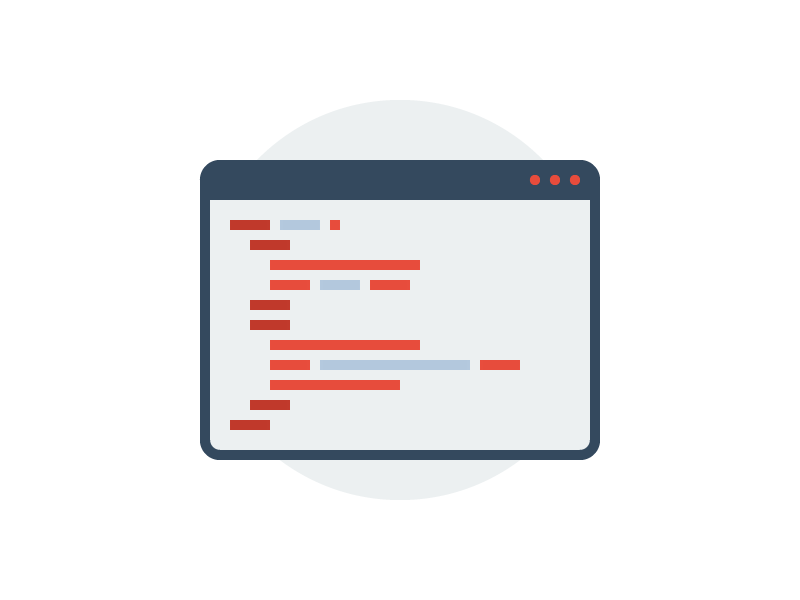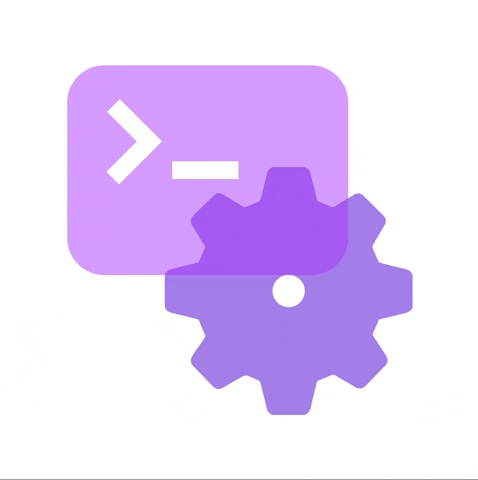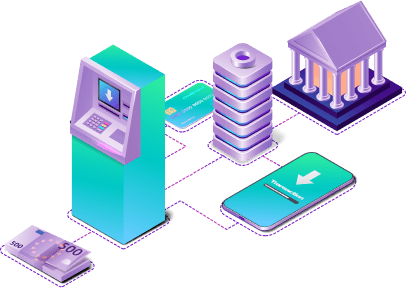This website stores cookies on your computer. These cookies are used to improve your website experience and provide more personalized services to you, both on this website and through other media. To find out more about the cookies we use, see our privacy policy.
POS Terminal Management System
(Under NDA)
Breaking geographical barriers, this secure and seamless system optimizes management, offering a singular point for overseeing diverse POS terminals.


Project Overview
Our project revolves around establishing a centralized POS Terminal Management System to address challenges posed by dispersed POS applications. This system unifies various local terminals into a cohesive network, enhancing efficiency. The project spans UI/UX design, frontend and backend development, Socket.IO integration, and thorough beta testing. The ultimate goal is to provide businesses with a seamless platform for effortless management, registration, and configuration of POS devices.
Customer Company Story
Our client, a leading force in their nation's financial technology landscape, entrusted us to revolutionize their operations, the client sought our expertise to develop an advanced Terminal Management System. This bespoke solution consolidates and oversees a network of over 200,000 registered POS devices, facilitating streamlined management, registration, and configuration processes. Supporting more than 800,000 payment terminals.

Unified Dashboard
A centralized dashboard offering real-time insights into the status and performance of over 200,000 registered POS devices.

Business and Store Registration
Intuitive tools for businesses and stores to effortlessly register, enabling efficient management of their presence within the system.

Terminal and User Management
Comprehensive features for managing terminals and user access, promoting flexibility and control.

Terminal Logs
Detailed logs providing a chronological record of activities, aiding in performance analysis and issue resolution.

Configurations
Granular configurations covering device communications, clerk/server maintenance, transaction settings, device printer configurations, and header/footer management.

Notifications and Updates
Customizable notification system providing timely updates on device status, ensuring proactive issue resolution.
Challenge
The project encountered challenges in managing dispersed Point-of-Sale (POS) applications across local terminals. Centralizing control over 200,000 POS devices posed significant organizational hurdles. Achieving seamless UI/UX alignment required meticulous attention. Security concerns were paramount, necessitating robust measures to safeguard data in interactions between the management system and POS devices. Additionally, the integration of various technologies presented intricate technical challenges. These obstacles underscored the need for innovative solutions and strategic planning in developing the Terminal Management System.

Stacks
The Terminal Management System achieved optimal functionality through a strategic selection of tech stacks

Data Storage
MongoDB was chosen as the primary database solution, providing a robust and scalable foundation for efficient data storage.

Back-End Development
Node.js and Express formed the core of the backend, ensuring seamless server-side operations and facilitating efficient communication with the frontend.

Front-End Development
React was employed for frontend development, empowering the system with a dynamic and responsive user interface, contributing to an enhanced user experience.

Real-time Communication
The system achieved real-time communication capabilities through the integration of Socket.IO, ensuring responsiveness and effective data exchange.

Messaging and Email Functionality
Send Grid played a pivotal role in the implementation of messaging and email functionalities, contributing to effective communication and notifications.

Media Handling
Cloudinary was leveraged for seamless media handling, enabling efficient storage and retrieval of multimedia content within the system.
Solution
We began by examining the architecture of different POS Systems and schema, segmenting it into distinct sections for improved organization. Employing the Agile methodology, we divided the work into ten individual sprints.

Outcomes
The final outcome was the full-fledged Terminal Management System includes the following:
- Unified Dashboard
- Businesses and Stores Registration
- Terminal and User Management
- Terminal Logs
- Terminal Configurations
- Clerk/Server Maintenance
- Transaction Settings
- Device Printer Configurations

Make your Custom CMS/CRS a reality! Focus on innovating and leave us the heavy lifting!

Boost Efficiency with our POS Terminal Management System
Welcome to Webevis Technologies, your gateway to enhanced business efficiency through cutting-edge technology. Our Terminal Management System is designed to optimize your point-of-sale operations. You can revolutionize your business approach with streamlined processes and elevate your customer experience.
Our Terminal Management System Services
Our comprehensive Terminal Management System services are designed to streamline your operations. With seamless integration and exceptional support from setup to maintenance, trust us to enhance efficiency effortlessly and drive your business forward.
What is a Terminal Management System? How do they work?
A Terminal Management System (TMS) is a software solution that oversees the operations of terminals, particularly in industries like transportation, logistics, and retail. It acts as a centralized control hub, managing various aspects of terminal operations, such as inventory management, equipment tracking, and transaction processing.
At its core, a TMS integrates with terminal hardware and software components, consolidates data from different sources, and provides real-time insights into terminal activities. Through automation and optimization algorithms, it streamlines workflows, reduces manual errors, and enhances overall efficiency.
Key functionalities of a TMS include:
Inventory monitoring to ensure sufficient stock levels.
Equipment maintenance scheduling to minimize downtime.
Transaction tracking for accurate financial reporting.
Additionally, advanced TMS platforms often incorporate predictive analytics to forecast demand patterns and optimize resource allocation.
Why use a Terminal Management System?
Utilizing a Terminal Management System (TMS) offers numerous benefits for businesses:
It enhances operational efficiency by automating tasks, minimizing errors, and optimizing resource allocation.
A TMS improves inventory management, ensuring optimal stock levels and reducing stockouts.
Integration Capabilities :
Prioritize POS systems that offer seamless integration with other business tools such as accounting software and CRM systems, facilitating data synchronization and streamlining operations across departments.
It enhances customer service by streamlining transactions and reducing waiting times. A TMS provides real-time insights into terminal operations, enabling informed decision-making and proactive problem-solving.
It facilitates compliance with regulations and standards, reducing the risk of penalties or fines.
Who is using Terminal Management Systems?
In the transportation sector, airports, seaports, and railway terminals rely on TMS for efficient cargo handling and passenger management.
Retailers leverage TMS to streamline point-of-sale operations and inventory management.
Manufacturing plants use TMS to optimize logistics and distribution processes. Logistics companies employ TMS to track shipments and manage warehouse operations.
Even service-based businesses, such as healthcare facilities and event venues, utilize TMS for queue management and resource allocation.
Essentially, any business with terminal operations seeking improved efficiency, accuracy, and control can leverage TMS to streamline their processes and stay competitive in their respective markets.
What Problems Does Terminal Management System Solve?
A Terminal Management System (TMS) addresses various challenges encountered in terminal operations across industries.
Streamlined Workflows
A Terminal Management System (TMS) resolves the complexity of terminal operations by automating manual tasks, reducing processing times, and eliminating errors associated with manual data entry.
Inventory Optimization
TMS offers real-time visibility into stock levels, minimizing stockouts and reducing inventory holding costs through efficient inventory management.
Enhanced Operational Visibility
TMS provides real-time monitoring of terminal activities, enabling stakeholders to identify issues and make informed decisions for smoother operations proactively.
Optimized Resource Utilization
Efficient allocation of equipment, personnel, and other resources based on demand and availability is facilitated by TMS, leading to improved productivity and cost-effectiveness.
Security Measures :
Implementing access controls and monitoring systems to address security concerns.
Compliance Assurance :
TMS helps adhere to regulatory requirements and industry standards, ensuring compliance with safety protocols and avoiding penalties.
Improved Customer Satisfaction :
Reduced wait times, minimized disruptions, and enhanced service quality contribute to better customer experiences, bolstering satisfaction and loyalty.
What is TMS on POS?
TMS on POS refers to a Terminal Management System integrated with Point of Sale (POS) systems. It functions as a centralized platform to manage various aspects of POS terminals, including software updates, transaction processing, inventory management, and reporting. TMS on POS streamlines operations, ensures consistency across multiple terminals, and provides real-time insights into sales and inventory data. Automating routine tasks and optimizing workflows enhances efficiency, reduces errors, and improves overall customer experience. TMS on POS is essential for businesses looking to streamline their retail operations and stay competitive.
What is the TMS terminal?
The TMS terminal is a physical or virtual endpoint within a Terminal Management System (TMS) infrastructure. It serves as a node through which various terminal operations are managed and controlled, including equipment management, resource allocation, and transaction processing. The TMS terminal acts as a centralized hub for overseeing and coordinating activities within a terminal facility, ensuring smooth operations, optimizing efficiency, and facilitating real-time monitoring and decision-making.
Semantically Related FAQs
What is a Terminal Management System?
A Terminal Management System (TMS) is software that centralizes control of terminal operations, including equipment management, transaction processing, and resource allocation, streamlining efficiency and enhancing oversight.
How can a Terminal Management System benefit my business?
A TMS automates tasks, reduces errors, optimizes resource allocation, and provides real-time insights, leading to cost savings, improved productivity, enhanced customer service, and compliance with regulations.
Is your Terminal Management System compatible with my existing POS system?
Yes, our Terminal Management System (TMS) is designed to seamlessly integrate with a wide range of existing Point of Sale (POS) systems. We understand the importance of compatibility and interoperability, ensuring that our TMS can integrate smoothly with your current POS infrastructure without causing disruptions or compatibility issues. Our TMS can adapt and integrate effortlessly, allowing you to leverage its benefits without the hassle of system overhauls or compatibility concerns.
Can I customize the features of your Terminal Management System?
Absolutely! We understand that every business is unique, with its own set of requirements, workflows, and preferences. Therefore, we offer a high degree of customization options for our Terminal Management System (TMS), allowing you to tailor the features and functionalities according to your specific needs.
How secure is your Terminal Management System?
Our TMS employs robust security measures, including encryption, user authentication, and access controls, to safeguard your data and transactions, ensuring compliance with industry standards and regulations.
What type of support do you offer for your Terminal Management System?
We provide comprehensive support, including technical assistance, training, and ongoing maintenance, to ensure smooth implementation and operation of our TMS, with dedicated experts ready to assist you.
Can I track inventory in real time with your Terminal Management System?
Yes, our TMS offers real-time inventory tracking capabilities, providing accurate visibility into stock levels, movement, and replenishment needs, enabling proactive inventory management and minimizing stockouts.
Is training provided for using your Terminal Management System?
Yes, we offer training programs tailored to your team's needs, covering system usage, best practices, and troubleshooting, ensuring your staff is equipped with the knowledge to maximize the benefits of our TMS.
What industries do you serve with your Terminal Management System?
Our TMS caters to various industries, including logistics, transportation, retail, manufacturing, and more, providing tailored solutions to meet the unique operational requirements of each sector.
How do I get started with your Terminal Management System?
Contact usto schedule a consultation, where we will assess your requirements, customize a solution, and guide you through the implementation process for seamless integration into your business operations.